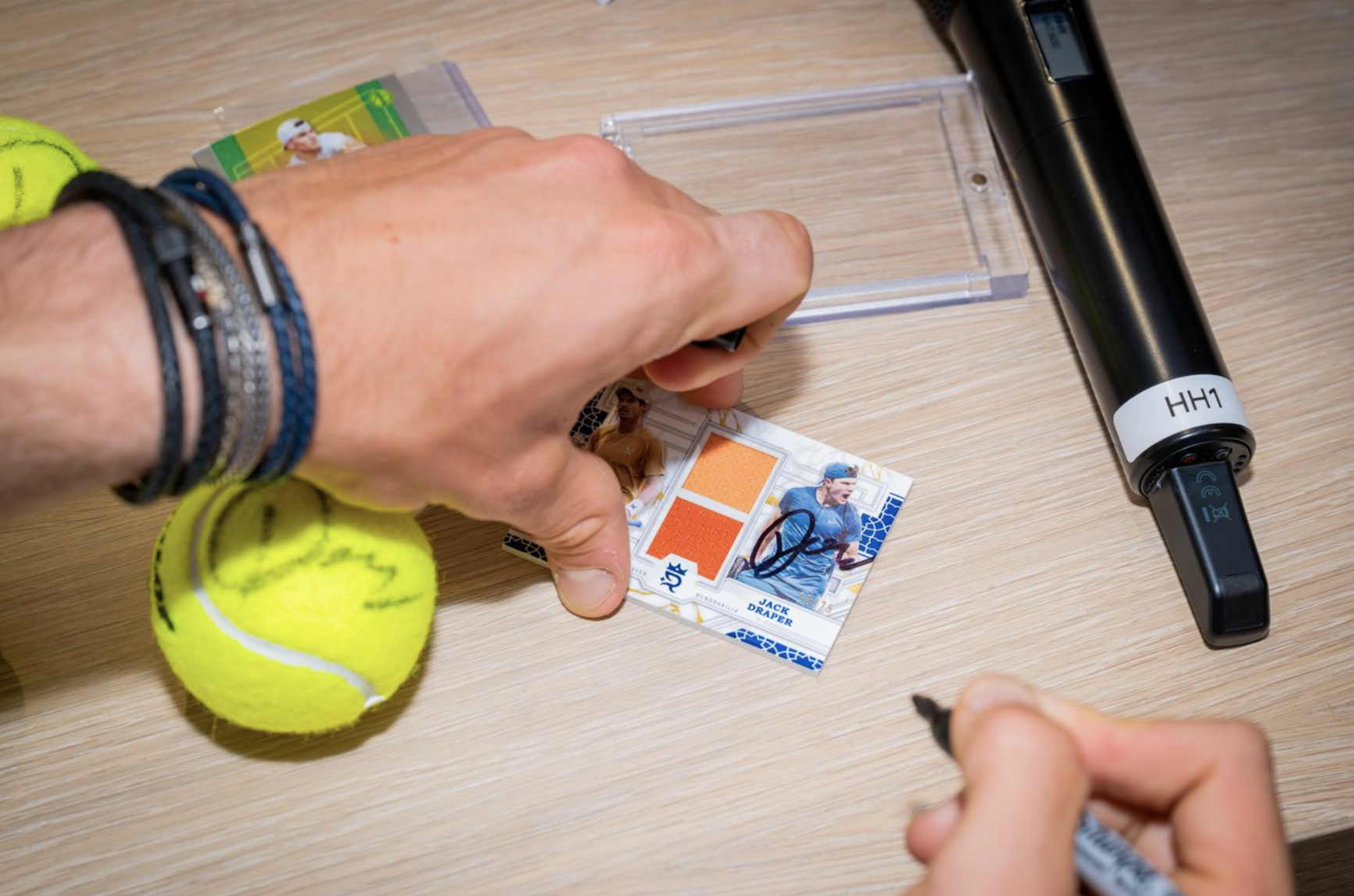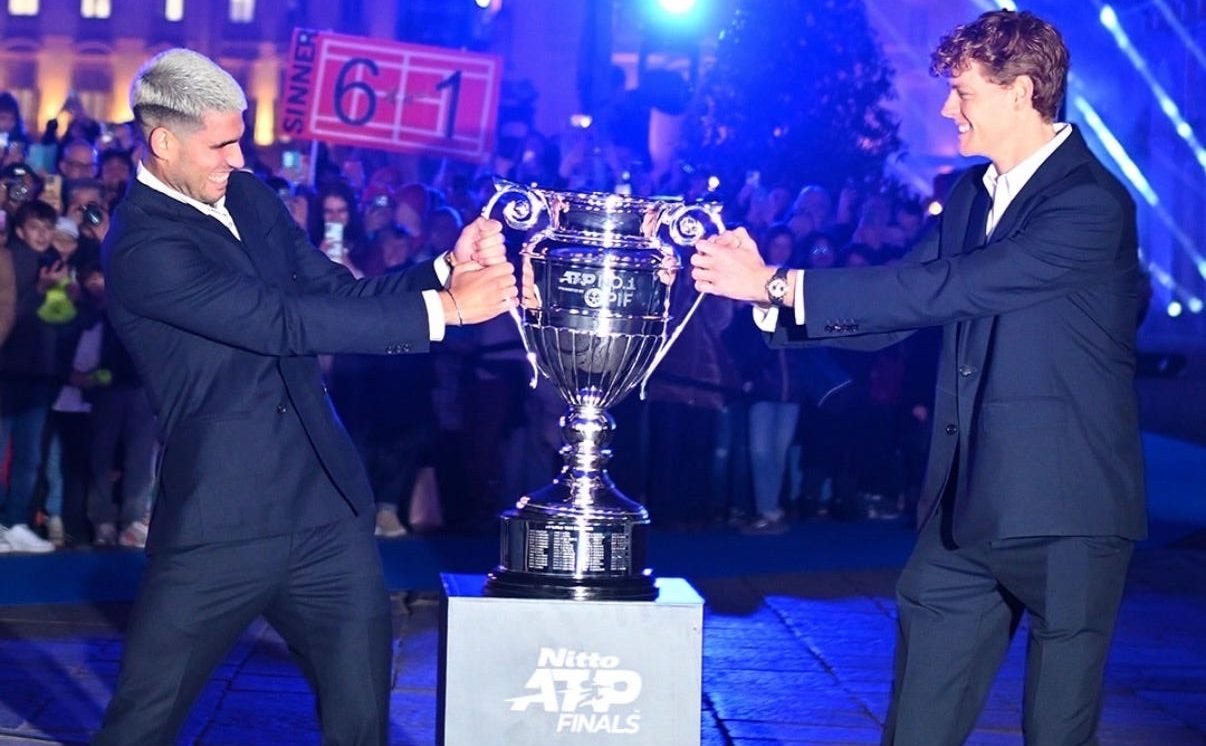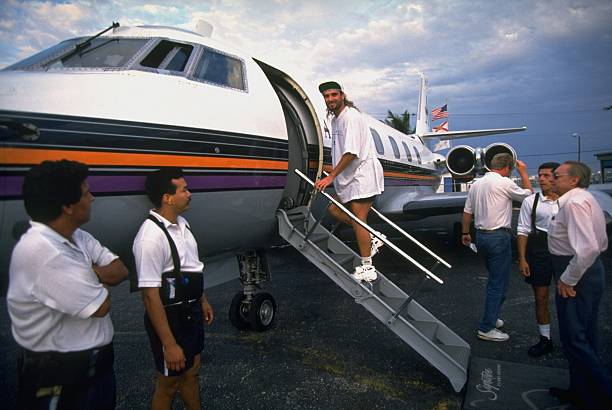I’ve always loved collecting sports memorabilia. I was full-send as a kid, collecting cards, magazines, & sports books. Every Sports Illustrated issue from 1984-2022 was mine; they went with me from my childhood home to college, medical school, residency and life ongoing.
In an ironic twist, the sport I loved to watch and play the most—tennis—had virtually nothing to collect growing up. Sure, there would be the occasional signed photos or Sports Illustrated cover (Ivan Lendl and “The Champion That Nobody Cares About,” for example), but nothing I could trade with my friends or display in my room.
This was always hard to reconcile, as tennis has always been one of the largest truly global sports, yet somehow it lacked the collectible cachet of baseball, football, or basketball. So naturally when I discovered Racquet in 2016, I needed not just to subscribe, but also to collect and preserve. The itch must be scratched, and as I had always done, I carefully stored it, along with each issue that followed.
Then came the collectibles boom: Over the past decade, the sports collectibles market has absolutely exploded. The backbone of this upsurge has been sports cards, but it also encompasses game-used apparel, ticket stubs, and yes, sports magazines (I see you, Racquet). For context, we are now talking about a multi-billion dollar worldwide industry, with collectors of all ages, serious investors building out valuable portfolios, with ongoing growth in previously under-explored areas like tennis.
The prices of individual items lend credence to this, as premium cards from all eras and all sports routinely sell for six- and seven-figure prices, mostly through online marketplaces like eBay and Goldin Auctions. Tennis being no exception: the 2003 NetPro Serena Williams autographed rookie card with an embedded piece of match-used apparel sold at auction in 2022 for $266,400.
It’s fair to say that tennis has lots of catching up to do in the collectibles space, but tennis collectibles are charging up towards their sports counterparts. Topps tennis cards came onto the market for the first time in 2024, and have recently broken out with the superb 2024 Topps Royalty Tennis collection. Released on May 15 this year, the premium set sold out on its day of release. That’s no surprise, given that it features a massive checklist of current and past stars as well as rare cards with autographs, embedded match-used apparel and even racket knobs, all heavily promoted by the players themselves.
Interest in this product continues to grow, as tennis is in its busiest and best part of the calendar, where attention focuses on the Grand Slams and American sports fans are less distracted by basketball, baseball and football. At the time of writing, Topps Royalty boxes are selling on eBay for more than two times the original retail price.
It’s important to acknowledge that collecting sports cards and memorabilia is not just about chasing these high-end items. This is a deep and diverse pool of collectibles, with fun stuff and accessible points of entry for nearly anyone who’s interested.

The basics:
- There are few keys to understanding the world of sports collectibles. To begin with, simply consider what would be fun to collect. Cards remain the backbone of the industry, but everything from gear to ticket stubs and magazines are highly sought-after. Do you have a favorite player or era? Get what you love, and understand why you’re doing it. When I got back into the hobby, it was partly for the thrill of the chase, but it was more about finding ways to share a love of sports with my son.
- With your interests in mind, start to learn what’s out there. Learn the lingo, and how to identify rookie cards, numbered cards, parallels and artifact cards. Using apps and online communities are great, but nothing beats going to your local memorabilia store or card show to learn from experts and meet like-minded collectors.
- Understand your budget and stick with it, as price points vary greatly and values can fluctuate wildly. Know who you’re buying from; caveat emptor applies more than ever, so a good rule is if the price is too good to be true, it’s best to avoid. Look for authenticated products when shopping online; it’s an excellent way to compare prices and assure authenticity.
- Which brings us to grading. Grading companies like PSA (Professional Sports Authenticator) and CGC (Certified Collectibles Group) assess an item’s condition on a scale from 1 to 10. Factors include centering, sharpness of corners and edges, and surface condition. A PSA 10 card is the highly sought after “Gem Mint,” while a PSA 9 is “Mint”, and so on. These numbers denote quality, and are the critical proxy for pricing when it comes to selling a graded card; the difference in value between grades can be significant.
Submitting a card for grading involves sending your item to one of these companies, where it is authenticated, graded, and enclosed in a tamper-proof plastic slab, complete with serial number. Just like that, you’ve got authenticity and quality control locked in.
Grading is also a democratic process; nearly any item can be authenticated and graded. So when my son found my Racquet issue no.1 on my shelf, and he stared at that kinetic cover, I knew what to do: we carefully packed it and sent it off to CGC.
A few weeks later, a box arrived. If you’ve ever watched collectors open packs or anything else online, the reveal is half the fun. My wife videoed as my boy and I revealed our newly graded magazine. In the video, our voices register the anticipation, fun, and excitement of opening the box—tennis and my son and I connected with the world of memorabilia. He immediately laid claim to “his” 9.6 Racquet, and refers to it as such when he sees it in my office. (He can have it one day, just please don’t tell him yet.)
It is a good thing that tennis collectibles are surging. It’s good for the sport, it’s good for the fanbase, and it’s another point of entry for those interested in starting their own collection. We remember the things that bring us joy and closeness with those we love. For my family, that includes collecting tennis memorabilia and a magazine that is truly a collector’s dream.
Mark Shapiro, MD is a hospitalist and the founder and host of the Explore the Space podcast. He thinks it's high time tennis got into the collectibles world.






